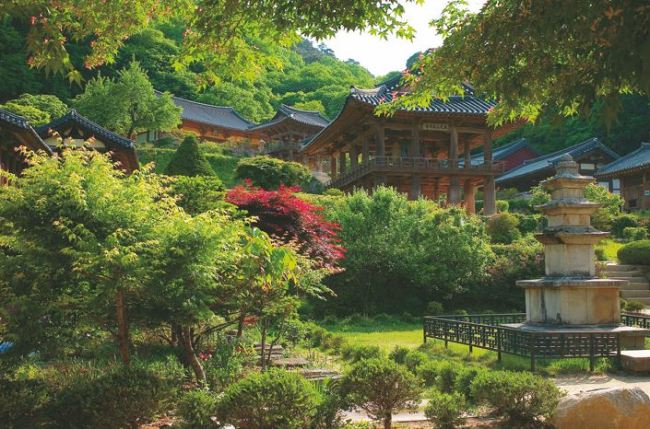Joint committee to seek UNESCO status for Buddhist mountain temples
By Korea HeraldPublished : July 27, 2014 - 19:21
South Korea is stepping up efforts to inscribe the nation’s traditional Buddhist mountain temples as UNESCO World Cultural Heritage sites with the founding of a new association to facilitate and oversee the inscription process until 2018.
The Jogye Order of Korean Buddhism will join hands with various actors including the Cultural Heritage Administration of Korea and 12 regional organizations, to form a joint committee for the inscription project by signing a memorandum of understanding on Aug. 6.
The Korean traditional Buddhist temples currently registered on UNESCO’s tentative list of World Heritage sites are Magoksa in Gongju, Beopjusa in Boeun, Tongdosa in Yangsan, Buseoksa in Yeongju, Bongjeongsa in Andong, Daeheungsa in Haenam and Seonamsa in Suncheon.
Initial moves to register the temples as World Heritage sites began with preliminary efforts by the Korea Brand Association in 2011. After evaluating 45 of the nation’s traditional Buddhist temples, the Cultural Heritage Administration of Korea chose seven temples to be registered on UNESCO’s tentative list in December 2013.
The Jogye Order of Korean Buddhism will join hands with various actors including the Cultural Heritage Administration of Korea and 12 regional organizations, to form a joint committee for the inscription project by signing a memorandum of understanding on Aug. 6.
The Korean traditional Buddhist temples currently registered on UNESCO’s tentative list of World Heritage sites are Magoksa in Gongju, Beopjusa in Boeun, Tongdosa in Yangsan, Buseoksa in Yeongju, Bongjeongsa in Andong, Daeheungsa in Haenam and Seonamsa in Suncheon.
Initial moves to register the temples as World Heritage sites began with preliminary efforts by the Korea Brand Association in 2011. After evaluating 45 of the nation’s traditional Buddhist temples, the Cultural Heritage Administration of Korea chose seven temples to be registered on UNESCO’s tentative list in December 2013.

Though the Korean temples of Bulguksa and Haeinsa are already recognized as UNESCO World Heritage sites, the recent initiative marks South Korea’s first attempt at inscribing several temples as a group of heritage sites.
The seven temples on the list share commonalities and qualities unique to Korea. All were built around the era of the Unified Silla period (668-935), and all preserve ancient architectural styles and traditional structures formed during the ancient era. Various pagodas, Buddha statues, paintings and artifacts are preserved inside the temple grounds.
Located on mountains, the temples are also recognized for their particular closeness to nature. Unlike Chinese or Japanese temples, Korean temples lack bordering walls and are known for blending well with the surrounding natural landscapes, which remain largely untouched.
“Korean mountain temples are known for blending harmoniously with nature ― the landscape, human and temple together form a stable relationship,” said Kim Jin-sub, a researcher at the Cultural Affairs Department at the Jogye Order of Korean Buddhism Headquarters.
“These mountain temples truly embody the essence of Korean Buddhism, which includes elements of Indian, Chinese and Southeast Asian Buddhism, yet represent characteristics of uniquely Korean philosophies,” said the Ven. Hye-il, the director of the department.
Over the next few years, the newly inaugurated joint organization will be tasked with facilitating communication between the various actors and carrying out necessary procedures ahead of the inscription process. The association will hold academic symposiums in Korea and conduct further research in preparation for UNESCO’s on-site inspection, until the final registration is completed in June 2018.
Meanwhile, Namhansanseong, a mountain fortress in the southern outskirts of Seoul, gained UNESCO World Heritage status in June.
By Sohn Ji-young (jiyoung.sohn@heraldcorp.com)
-
Articles by Korea Herald



















![[Today’s K-pop] Treasure to publish magazine for debut anniversary](http://res.heraldm.com/phpwas/restmb_idxmake.php?idx=642&simg=/content/image/2024/07/26/20240726050551_0.jpg&u=)